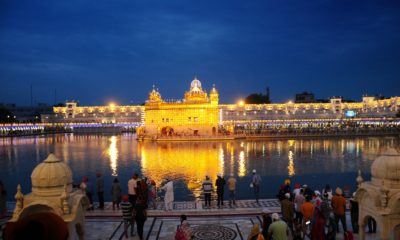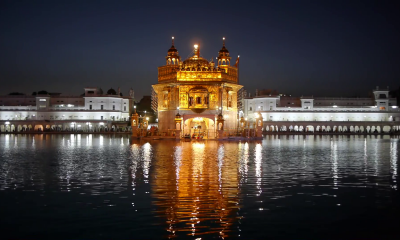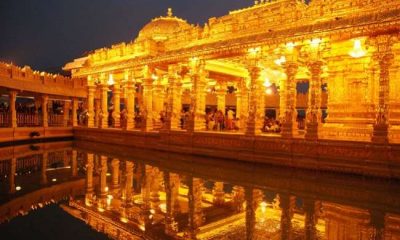Feature
Air India Kanishka tragedy: Inderjit Singh Reyat to be released soon

Toronto: A single person accused for the 1985 Air India Kanishka airliner bombing, Inderjit Singh Reyat will soon be freed from the jail in British Columbia.
Air India Kanishka’s Flight 182 from Montreal to Delhi was blown off mid-air near the Irish coast on June 23, 1985, killing all 329 people and crew on board.
Within an hour, another bomb meant for another Air India flight from Tokyo to Mumbai went off during luggage transfer at the Tokyo airport, killing two baggage handlers.
Both the bombs were hidden in suitcases and checked in at Vancouver airport. Vancouver-based Khalistani extremists had planned the bombing to avenge the 1984 army action at the Golden Temple in Amritsar to flush militants.
Reyat — an electrical mechanic — had assembled and tested the bomb that went off at Tokyo airport for which he was given 10 years in jail in 1991. After this, he was given another five years in jail for his role also in the Air India Kanishka bombing.
After his release, Reyat was charged in 2010 with lying under oath during the trial of the two main Air India bombing accused — Ripudaman Singh Malik and Ajaib Singh Bagri — in 2003 when he was brought from jail to testify.
Both Malik and Bagri were eventually found not guilty and freed in March 2005.
After his perjury trial, Reyat was jailed for another nine years in January 2011. After getting credit for the time already served, he was to serve seven years and seven months in jail.
Since under the Canadian laws convicts can be released from jail after two-thirds of their sentence to serve the remainder of the term in the community, Reyat will get an automatic release from jail.
Under terms of release by Parole Board of Canada, Reyat will be regularly monitored after his release.
He is forbidden from propagating extremist views or associating with those who hold extremist views. He is also not allowed to possess anything for building explosive devices.
Reyat will be forbidden from contacting the families of Air India victims.
Entertainment
Meghalaya Reserves Legalized Gambling and Sports Betting for Tourists

The State Scores Extra High on Gaming-Friendly Industry Index
Meghalaya scored 92.85 out of 100 possible points in a Gaming Industry Index and proved to be India’s most gaming-friendly state following its recent profound legislation changes over the field allowing land-based and online gaming, including games of chance, under a licensing regime.
The index by the UK India Business Council (UKIBC) uses a scale of 0 to 100 to measure the level of legalisation on gambling and betting achieved by a state based on the scores over a set of seven different games – lottery, horse racing, betting on sports, poker, rummy, casino and fantasy sports
Starting from February last year, Meghalaya became the third state in India’s northeast to legalise gambling and betting after Sikkim and Nagaland. After consultations with the UKIBC, the state proceeded with the adoption of the Meghalaya Regulation of Gaming Act, 2021 and the nullification of the Meghalaya Prevention of Gambling Act, 1970. Subsequently in December, the Meghalaya Regulation of Gaming Rules, 2021 were notified and came into force.
All for the Tourists
The move to legalise and license various forms of offline and online betting and gambling in Meghalaya is aimed at boosting tourism and creating jobs, and altogether raising taxation revenues for the northeastern state. At the same time, the opportunities to bet and gamble legally will be reserved only for tourists and visitors.
“We came out with a Gaming Act and subsequently framed the Regulation of Gaming Rules, 2021. The government will accordingly issue licenses to operate games of skill and chance, both online and offline,” said James P. K. Sangma, Meghalaya State Law and Taxation Minister speaking in the capital city of Shillong. “But the legalized gambling and gaming will only be for tourists and not residents of Meghalaya,” he continued.
To be allowed to play, tourists and people visiting the state for work or business purposes will have to prove their non-resident status by presenting appropriate documents, in a process similar to a bank KYC (Know Your Customer) procedure.
Meghalaya Reaches Out to a Vast Market
With 140 millions of people in India estimated to bet regularly on sports, and a total of 370 million desi bettors around prominent sporting events, as per data from one of the latest reports by Esse N Videri, Meghalaya is set to reach out and take a piece of a vast market.
Estimates on the financial value of India’s sports betting market, combined across all types of offline channels and online sports and cricket predictions and betting platforms, speak about amounts between $130 and $150 billion (roughly between ₹9.7 and ₹11.5 lakh crore).
Andhra Pradesh, Telangana and Delhi are shown to deliver the highest number of bettors and Meghalaya can count on substantial tourists flow from their betting circles. The sports betting communities of Karnataka, Maharashtra, Uttar Pradesh and Haryana are also not to be underestimated.
Among the sports, cricket is most popular, registering 68 percent of the total bet count analyzed by Esse N Videri. Football takes second position with 11 percent of the bets, followed by betting on FIFA at 7 percent and on eCricket at 5 percent. The last position in the Top 5 of popular sports for betting in India is taken by tennis with 3 percent of the bet count.
Local Citizens will Still have Their Teer Betting
Meghalaya residents will still be permitted to participate in teer betting over arrow-shooting results. Teer is a traditional method of gambling, somewhat similar to a lottery draw, and held under the rules of the Meghalaya Regulation of the Game of Arrow Shooting and the Sale of Teer Tickets Act, 2018.
Teer includes bettors wagering on the number of arrows that reach the target which is placed about 50 meters away from a team of 20 archers positioned in a semicircle.
The archers shoot volleys of arrows at the target for ten minutes, and players place their bets choosing a number between 0 and 99 trying to guess the last two digits of the number of arrows that successfully pierce the target.
If, for example, the number of hits is 256, anyone who has bet on 56 wins an amount eight times bigger than their wager.

















